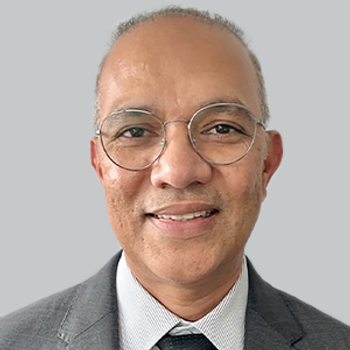
- April 2023
- Volume 6
- Issue 2
Early Identification and Personalized Care in Spinal Muscular Atrophy: Insights From Brazil
Experts review the state of SMA diagnosis and medications, highlighting factors that guide treatment selection in North America and South America.
NEW THERAPIES EXPANDED THE treatment paradigm for spinal muscular atrophy (SMA) over the past decade, providing more treatment options for clinicians and patients. The landscape now includes risdiplam (Evrysdi; Genentech/Roche), nusinersen (Spinraza; Biogen), and onasemnogene abeparvovec (Zolgensma; Novartis Gene Therapies).
These advances have reached around the world, most recently to individuals with SMA living in Brazil. After approving risdiplam and nusinersen, Brazil’s National Supplementary Health Agency added onasemnogene abeparvovec to its mandatory coverage list in February 2023,1 opening the therapy to patients after facing challenges to access since its 2020 approval.2 The gene therapy is indicated for the treatment of pediatric patients up to 6 months of age with SMA type 1 who are off invasive mechanical ventilation for more than 16 hours per day.1
Whenever new medications become available, treatment paradigms are affected in a variety of ways. There is an immediate need for education on the administration of the treatment, the patient populations most likely to benefit from it, and its interactions with other therapies. Additionally, its use may require monitoring or additional therapy.
NeurologyLive® brought together a panel of experts from institutions around the United States and Brazil to offer their perspectives on the current care of SMA, the specific challenges and scenarios faced by Brazilian physicians, and other topics. The panel was moderated by John F. Brandsema, MD, a pediatric neurologist and head of the neuromuscular section of the Division of Neurology at the Children’s Hospital of Philadelphia in Pennsylvania. Brandsema guided the conversation from discussion on treatment decisions to deep dives on clinical data.
Symptoms, Referrals, and Early Diagnosis
Brandsema started by discussing with Juliana Gurgel-Giannetti, MD, PhD, the onset of early symptoms of SMA that often drive families to secure clinical care for their children. Brandsema and Gurgel-Giannetti, a neuropediatrician and associate professor at the Universidade Federal de Minas Gerais, noted that it is important to recall the manifestations of SMA early in the screening and diagnostic process.
Generally, patients with SMA type 1 are hypotonic, have motor delays, and have trouble supporting their neck. In SMA type 2, motor delay is also present—these children are often able to sit but have difficulty standing and walking. In SMA type 3, the disease presents similarly to a muscular disease, Gurgel-Giannetti explained, many times with muscle weakness in the lower limbs. Patients with SMA type 3 have difficulty walking, climbing stairs, and getting up from the floor.
“In babies with SMA type 1, besides the motor milestones, sometimes the family notices a breathing difficulty such as tachypnea or paradoxical breathing, and difficulty swallowing. When this happens, parents usually [take] the child to their pediatrician. The pediatrician is the first specialist who will access this information from the family. However, it is also common that the pediatrician asks the family to wait because the child may still be within a normal range,” Gurgel-Giannetti said.
In Brazil, particularly, the evaluation of these children is separated in the public and private systems. Adriana Banzzatto Ortega, MD, a neuropediatrician at Hospital Pequeno Príncipe and Hospital Erastinho in Curitiba, Brazil, explained that patients in the public system are evaluated monthly in the basic health unit by a nurse who weighs and measures the child and asks the family about development. These requirements can add additional referrals, compared with the private system, which ultimately results in a long delay until patients can see a pediatric or general neurologist.
Marcelo Kerstenetzky, MD, a pediatrician and pediatric hepatologist at the Hospital Barão de Lucena and the Instituto do Fígado de Pernambuco, and coordinator of RARUS at Hospital Maria Lucinda in Recife, Brazil, noted that the role of pediatricians in early diagnosis of SMA is crucial, particularly in terms of getting children with suspected SMA to the right clinician.
“We can only diagnose what we can think of, so it is important that pediatricians, primary care physicians, and physical therapists become familiar with the warning signs of a differential diagnosis of SMA,” Kerstenetzky said. “Hypotonia, motor delay, and muscle weakness should be immediately referred to a neuropediatrician to avoid delays in the diagnosis and consequences that are often irreversible.”
Clinical Data From Available Therapies
As mentioned, physicians in Brazil have access to the 3 novel medications also approved in the United States. Later in the panel discussion, Brandsema directed the group toward the available supporting data for these therapies. He asked how these might inform treatment decisions for patients.
Rodrigo de Holanda Mendonça, MD, a neurologist at the Hospital das Clínicas FMUSP in São Paulo, Brazil, offered his perspective on nusinersen. The therapy was assessed in several clinical trials, initially in children with SMA type 1 who are up to 7 months old. “A phase 3 clinical trial [CHERISH; NCT02292537] has shown efficacy of nusinersen in patients with SMA type 2 aged between 2 and 12 years on improved motor function measured by specific scales for this age group, as well as safety in this treatment,” Mendonça said.
Additionally, multiple real-world studies have shown the efficacy of nusinersen in patients with SMA type 1 at different ages. Mendonça noted that in Brazil studies have been published on the treatment of patients with SMA type 1 who are older than 2 years and those with SMA types 2 and 3 from adolescence to adulthood, with the findings showing a good safety profile and motor function gains or disease stabilization.
Ortega then discussed the efficacy data from the pivotal trials of risdiplam, noting that patients in the trial reported motor gains—including systemic improvement, mostly in bulbar and respiratory functions. Additionally, the trials included a broad range of patients, ranging from 2 months to 60 years of age. “There are also studies of risdiplam for presymptomatic patients aged under 2 years, but this use is not yet included in the Brazilian-approved prescribing information. In Brazil, the approved use of risdiplam is for 2-month-old patients and older,” Ortega said.
Mendonça then brought up the data on onasemnogene abeparvovec, including the phase 3 STR1VE trial (NCT03306277) in the United States and Europe, which displayed safety and efficacy of the gene therapy in patients with SMA type 1 who were up to 6 months old at the time of dosing. Overall, Mendonça said, the efficacy and safety profile were well studied. To date, he added, the most common adverse event appears to be liver toxicity, with older patients more likely to have transaminase elevations, resulting in longer corticosteroid treatment.
“Now we have long-term results from patients treated in the [phase 1] START trial [NCT03421977]. Over 5 years, these patients have been showing the efficacy of gene therapy maintained over the long term, without new adverse events beyond those in phase 3 studies such as hepatotoxicity, which happens mainly in the first weeks or months after administration of the gene therapy,” Mendonça said. “We also have real-world studies showing the efficacy of gene therapy in patients aged up to 2 years in German and Australian cohorts. Soon we will have a Brazilian cohort showing the efficacy and safety of gene therapy, primarily in this younger patient population.”
Ideal Patient Profiles for Treatment
Understanding the differences between the available treatment options is key to understanding the ideal patients for each therapy. Moreover, further study of these therapies can refine the clinical application of these treatments. Although when it comes to the various subpopulations of those with SMA— individuals who are presymptomatic, those who experience symptom onset infancy, and older patients, among others—it is also important to consider factors such as family history and the indication, Brandsema noted.
“The ideal patient for treatment, especially gene therapy, would be the presymptomatic patient. They would have the greatest benefit using a single-dose therapy,” Ortega said. “Symptomatic patients at the onset of symptoms would also benefit from any of the 3 drugs. We have managed to get presymptomatic and symptomatic patients to receive the therapies that modulate SMN2—nusinersen and risdiplam. As Gurgel-Giannetti said earlier, patients with SMA types 1 or 2 who are 2 months old and above would receive risdiplam.”
Nusinersen, Ortega continued, is indicated for patients with SMA type 1 who are off mechanical ventilation for at least 21 consecutive days, “a criterion that does not involve motor function, only the respiratory function,” she said. For those with SMA type 2, however, the criteria for nusinersen treatment include motor function, meaning those who still have upper limb function, who can sit without a backrest, and who can hold their heads up can receive the treatment.
“Of course, we must evaluate these patients every 4 to 6 months by repeating the motor scales to determine [whether] they are stable—in advanced SMA type 2—or have gains in early SMA types 1 and 2. If there are no gains or if patients’ symptoms worsen, they should be discontinued from drug treatment, according to the public health system protocol,” Ortega said.
In Brazil, protocols do not provide criteria for combination approaches, Gurgel-Giannetti said. Individuals can switch from one treatment to another but cannot use them in combination. Combination approaches, Brandsema said, are still an open question in some cases, particularly with gene therapy.
“There is a small group of [patients who] have been treated by both nusinersen and risdiplam at the same time in some care centers,” Brandsema said. “Data are being collected about this population but are still emerging, so it is difficult to make firm conclusions about superiority of treatments in combination in certain [patients] with SMA and their experience with the disease. Another factor to consider is whether there might be other tolerability or safety issues that come up with these combination approaches. We are trying to understand this as a community as quickly as possible, but it takes time to see the impact in this disease, so it is an open question that we will continue to explore through data collection as a community.”Brandsema explained that when making the treatment decision, in the United States particularly, it is key to have a transparent discussion of what is known about the different treatment options and the patient’s specifics. Age limits and other limiting factors can affect the use of different treatments.
“Once the family [understands] different treatment options, what is involved, [and] the potential efficacy and safety issues, we make a mutual decision,” he said. “But the biggest voice is the family’s, [because] they are the experts in what is the best for their child. We help to navigate, but we try very hard not to be prescriptive or to say, ‘This is the only right option,’ because the evidence from the clinical trials shows that all these medications do have efficacy if you use them early enough.”
REFERENCES
1. ANS includes medication for spinal muscular atrophy in the list of mandatory coverage. News release. Article in Portuguese. National Supplementary Health Agency. February 6, 2023. Accessed March 7, 2023. https://www.gov.br/ans/pt-br/assuntos/noticias/sobre-ans/ ans-inclui-medicamento-para-atrofia-muscular-espinhal-no-rol-de-coberturas-obrigatorias
2. Ivama-Brummell AM, Wagner AK, Pepe VLE, Naci H. Ultraexpensive gene therapies, industry interests and the right to health: the case of onasemnogene abeparvovec in Brazil. BMJ Glob Health. 2022;7(3):e008637. doi:10.1136/bmjgh-2022-008637
Articles in this issue
over 2 years ago
Promising Disease-Modifying Therapies in Parkinson Diseaseover 2 years ago
Managing Nonmotor Symptoms: Psychosis in Parkinson Diseaseover 2 years ago
Therapeutic Potential of IGF-1 and MECP2 in Rett Syndromeover 2 years ago
Therapeutics Aim at Modifying Alzheimer Diseaseover 2 years ago
Searching for the PD Holy Grailalmost 3 years ago
FDA Accepts Supplemental BLA for Traditional Approval of Lecanemabalmost 3 years ago
FDA Approves Omaveloxolone As First Treatment for Friedreich AtaxiaNewsletter
Keep your finger on the pulse of neurology—subscribe to NeurologyLive for expert interviews, new data, and breakthrough treatment updates.






























